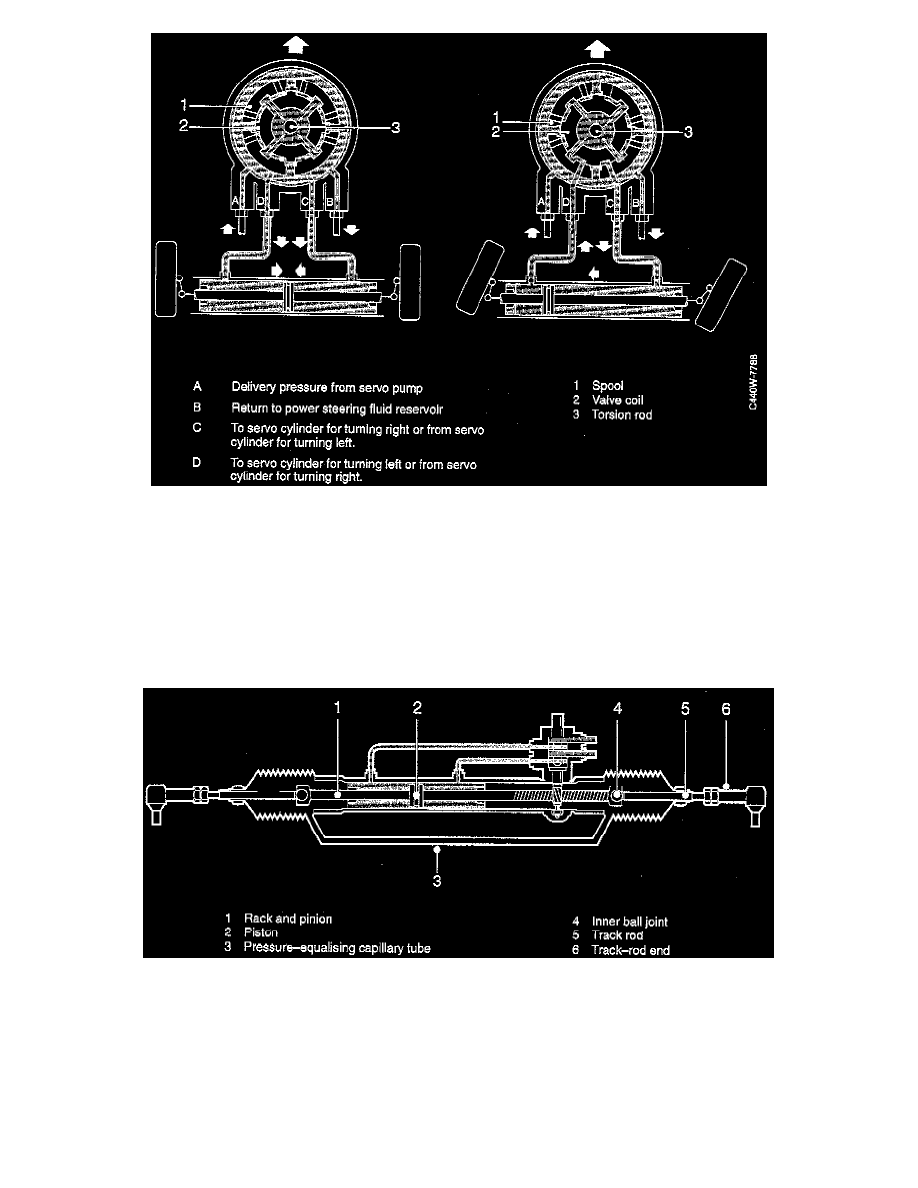9000 CS L4-2290cc 2.3L DOHC Turbo EFI (1996)

When the wheel is turned, the movement is transferred via the torsion rod to the pinion. Because the torsion rod twists slightly, there will be a
difference between the degree of the rotation of the valve (which follows the degree of rotation of the intermediate shaft) and the spool, which is fixed
to the pinion. The fluid can no longer flow through the control valve back to the reservoir directly but instead flows through the flow and return
passages for the servo cylinder. For a right turn, the fluid is pumped to the righthand side of the servo cylinder via the top radial groove (C) in the
spool. At the same time, fluid is discharged from the lefthand side of the servo cylinder via the bottom radial groove (D) in the spool. The fluid flows
through the valve into the chamber above the spool and is returned to the reservoir (B). For a left turn, the opposite circuit is opened.
As long as the torsion rod is twisted, hydraulic pressure will act on the rack to provide power assistance. The amount of twist in the torsion rod will be
reduced when the hydraulic fluid acts on the rack, reinforcing the pinion action. The instant the torsion rod is no longer under torsion, the return
passage through the valve is opened, allowing the fluid to flow directly back to the reservoir. There is always some flow of fluid through the valve,
apart from when the steering wheel is at full lock. This is necessary for the control valve to operate correctly and also helps to cool the fluid.
SERVO CYLINDER
The cylinder is part of the rack housing. The rack (1) is equipped with a piston (2) complete with seals. For flow of fluid to and from the control valve
there are two connections on the servo cylinder, one for either side of the piston. For turning right, fluid is pumped to the righthand side of the servo
cylinder. The piston and rack are forced towards the left and fluid is discharged from the lefthand section of the servo cylinder. Simultaneously, the
rubber gaiter on the lefthand side is distended and that on the righthand side compressed.
Airflows through a pressure equalizing capillary tube (3) between the gaiters, thus keeping the air pressure constant. Movement of the rack is
transferred via the inner ball joints (4), the track rod (5) and the track rod ends (6) to the track rod arms on the steering swivel members.
Both the inner ball joints and the track rod ends are lubricated for life and are self adjusting, and require no further adjustment or lubrication.
